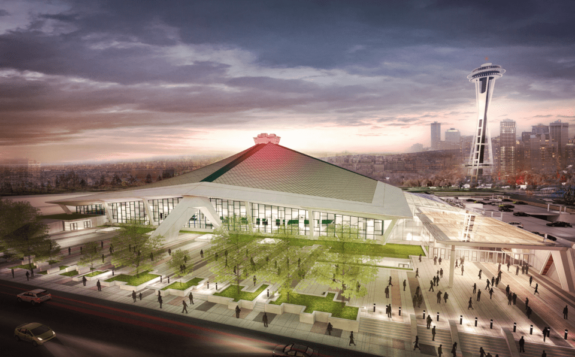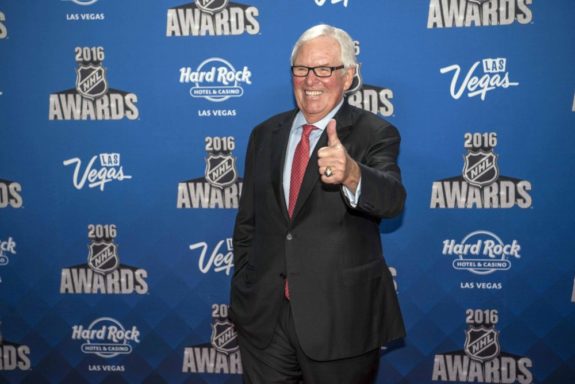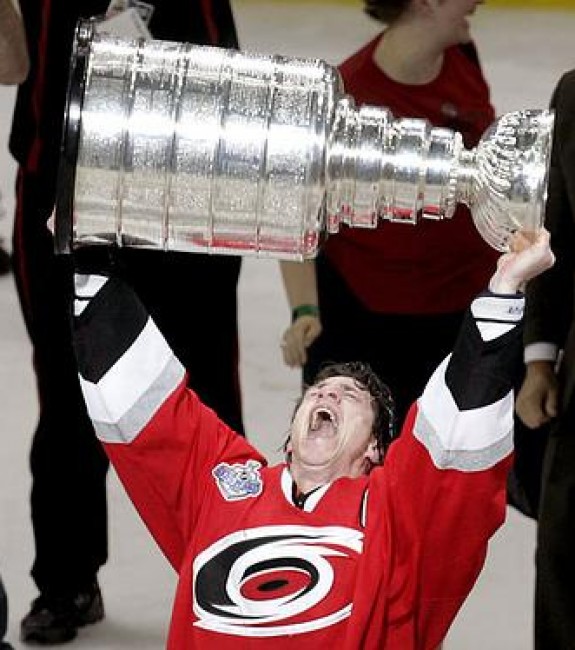The National Hockey League’s salary cap is going up for next season, likely falling somewhere between $78 and $82 million (it currently sits at $75 million).
Ostensibly, this is a good thing; a salary cap increase, especially one as big as this, seems to indicate the NHL is financially healthy and reliably prosperous. Additionally, with the league wishing to expand further, more jumps in the cap’s upper limit may not be far off.

However, this development could be bad news for fans. At minimum, smaller-market teams, particularly those already on a tight budget, might have trouble fielding competitive rosters. In turn, the parity that’s led to so many of the exciting stretch runs in recent years, along with the best postseason in sports, is in serious jeopardy. Furthermore, the generalised inflation of player salaries is sure to rankle the notoriously stingy NHL owners.
It all seems like the perfect recipe for a lockout. Or, at the very least, the return of rampant disparity.
Why Is the NHL Salary Cap Going Up?
Since it’s implementation in 2005-06 at a now-laughable $39 million, the salary cap has consistently increased in small increments. If the league’s projections hold true, the increase between this season and next could approach, or even surpass, the largest such jump in history.
While it would be wonderful if this significant projected increase was the result of the NHL’s business and marketing savvy, we all know the league has all the operational acumen of a potato.
A more logical explanation is the expected rise in the salary cap is largely the result of the league having $500 million extra in the bank after the Vegas Golden Knights paid their expansion fee.

A reasonable assumption is that another big boost to the cap will take place when the seemingly inevitable Seattle expansion team makes their payment of $650 million.
NHL Salary Cap Increases Make Parity Unsustainable
But the new money generated by NHL expansion, both in expansion fees and (hopefully) market profitability, puts the league’s hard-won parity in serious jeopardy.
NHL Teams Have Internal Salary Caps
According to CapFriendly, 11 teams – over one-third of the league – are projected to have at least $5 million in cap space at the end of the 2017-18 campaign. It’s no secret teams like the Arizona Coyotes simply don’t have the money to spend up to the salary cap. Others, like the Florida Panthers and the Ottawa Senators (though the Sens have spent more this season than in the past), have internal caps, mandated by ownership.
Jokinen buyout saves #FlaPanthers $1.2 million in real cash, $2.7M on cap this yr + next. Gets them closer to internal mandate to shed $10M.
— Frank Seravalli (@frank_seravalli) June 30, 2017
Simply put, there are a significant number of teams that, on a regular basis, can’t – or won’t – get anywhere near the salary cap as it currently stands. Thus, significant cap increases could further erode the parity this league prides itself on.
Window to Splurge for NHL’s Big-Market Teams
Undoubtedly, such significant increases in the salary cap will lead to gradual salary inflation across the board. However, there will be a window of time before all players have these newly scaled deals where wealthier teams can splurge on superstar talent.
John Tavares will be up for a new contract this summer, and Drew Doughty, Erik Karlsson and Oliver Ekman-Larsson are all unrestricted free agents in 2019. And that’s just a taste of the bevy of all-world talent coming available in the very near future.
Before the generalised inflation of salaries takes hold, it would not be surprising for big-market teams to make the most of their financial muscle and stock up on top-tier talent. Budget-conscious teams (think Karlsson’s Senators and Ekman-Larsson’s Coyotes) might not be able to offer the same money. Even if a budget team is able to retain their superstar talent, the expenditure might hinder the remainder of their roster.
Why Is NHL Parity a Good Thing?
One might question the wisdom of creating conditions optimal for parity (such as implementing a salary cap and revenue sharing) in a professional sports league, something which is, as we are constantly reminded, a business.
However, parity helps ensure that smaller-market teams, in theory, have the same shot at talented players as any other. Talented players tend to produce winning teams. Winning teams tend to make money. And making money is good for everyone. Thus, ensuring as many teams are as competitive as possible is good for the NHL.

It makes things exciting knowing any team can win on any given night. Simply letting big-market teams buy up all the best players, letting everyone else fight over the scraps, does create some intriguing David-versus-Goliath storylines (after all, who doesn’t want to see the Yankees lose?), but is ultimately harmful for the long-term viability of franchises that can’t afford the players they need to be successful.
Plus, even with enforced parity, the most level financial playing field in NHL history is still just as unbalanced on the ice as any other. The Pittsburgh Penguins, Chicago Blackhawks and Los Angeles Kings have won eight of the last nine Stanley Cups; clearly, despite things like the salary cap and revenue sharing, the cream (in this case, well-run organisations) will always rise to the top. The NHL’s parity project is more about ensuring all teams at least have the chance to reach the summit.
What Do NHL Owners Want?
Another factor in the NHL’s push for parity is that team owners will find every conceivable way to pay the players as little as possible. A salary cap keeps player salaries under control and revenue sharing helps shore up less-profitable markets. Expansion, especially to a market with a good chance of success, should help the owners’ cause, providing them with another revenue stream to help offset their own expenses.
Is There Going to Be Another NHL Lockout?
However, despite the success the increasing revenues seem to indicate, I fear the perfect storm is gathering for a(nother) NHL lockout. As we’ve seen in three excruciating work stoppages, the league and its owners are not shy about locking out their players to get their way (generally, lower player salaries), even if it means cancelling an entire season. The more the salary cap rises, the more another lockout becomes a very real possibility.
Rollback, anyone? Or how about more escrow? Knowing the NHL, it’ll be both.
NHL Expansion Good for Owners
It certainly seems as though expansion is in the owners’ best interests. The Eastern and Western conferences would finally be balanced, there would be more revenue streams for the league to draw upon, and, assuming neither Vegas nor Seattle needs subsidising, the league would make more money.
Let’s just hope the owners are content passing on some of this growth to the players.
NHL Expansion Consequences Threaten Small Markets
In a perfect world, NHL expansion and the changes it brings to the salary cap would only be beneficial.
However, though undoubtedly good for the fans in expansion markets, players struggling to crack the league, and the long-term growth and prosperity of the sport in general, the salary cap consequences of NHL expansion may be seriously detrimental to the league.
Or, more specifically, to its fans.